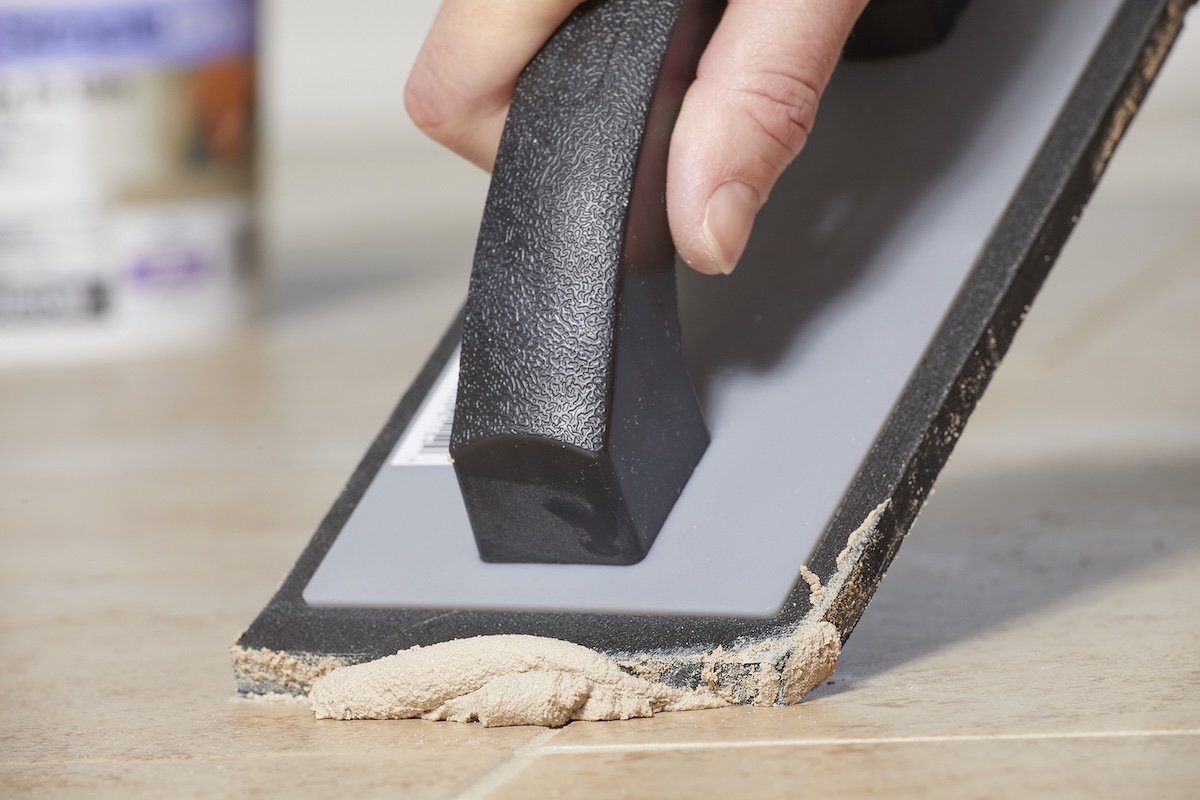

We may earn revenue from the products available on this page and participate in affiliate programs. Learn More ›
Applying grout is the final step in laying or adhering tile. It’s a messy process but a satisfying one: Yes, grout gives newly laid tiles a finished look. What’s more important, grout acts as a buffer between tiles and keeps them from moving around and chipping. Grout also protects the substrate under the tiles from water damage, and keeps dirt and debris from falling between the cracks in tiles.
What’s the difference between sanded and unsanded grout?
Sanded grout contains fine sand, which enables stability and resistance to cracking. Because of its durability, this type of grout is typically used in floor tiling projects. Unsanded grout, on the other hand, is held together with polymers; it’s used for joints that are narrower than ⅛ inch and on tiles—such as limestone or marble—that might be scratched by sanded grout. When it comes to sanded versus unsanded grout, however, “The application methods are the same,” says Sean Chavoustie, a tile installer based in Austin, Texas. “Unless the tile could be scratched by the sand, I normally just use the sanded grouts on everything.”
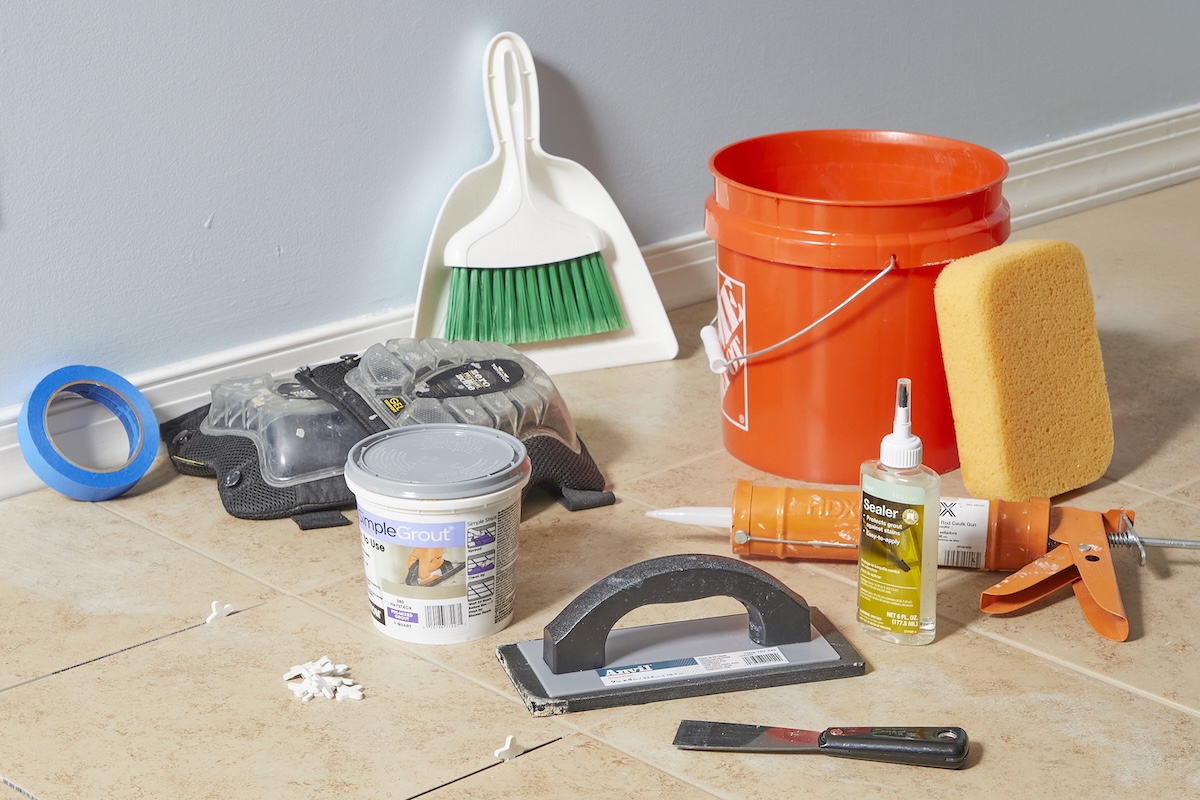
Tools & Materials
Bobvila.com may earn a commission from purchases made through these links.
Project Overview
Working Time: 1 to several hours
Total Time: 1 to several hours
Skill Level: Intermediate
Estimated Cost: $25 to several hundred dollars, depending on size of project
Before You Begin
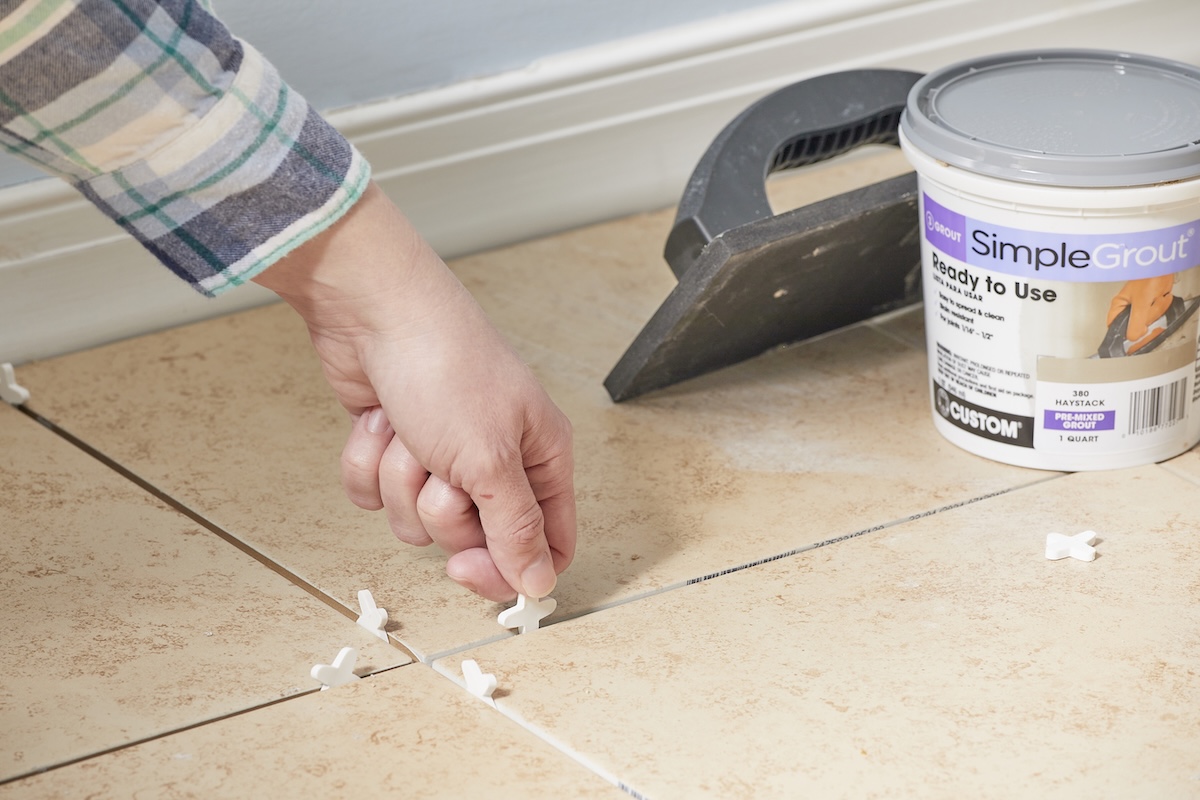
After you install tile on a floor or vertical surface, ensure that they are fully set and properly spaced. Tiles need to set for 24 to 28 hours before you can begin the grouting process. Gather all the grouting supplies together, and tape off any areas that you don’t want to get dirty.
8 Steps to Grouting Tile Floors and Walls
Step 1: Choose the right grout for your project.

Decide if sanded or unsanded grout works best for your project. And then select a color that will work best with your tile and overall decor. Many DIYers opt for a darker grout color for floor tile in heavily trafficked areas.
Grout around wall tiles will likely stay cleaner longer, so it’s easier to get away with a lighter shade. You’ll need to make sure you purchase the right amount of grout, which varies by the type and size of the project. Use a reliable grout calculator to help you figure out how much grout you need.
Step 2: Mix the grout.

When mixing grout, follow the manufacturer’s instructions on the grout packaging. Chavoustie suggests starting with less water than recommended, and then adding more water bit by bit until the mixture is a “cake batter-like consistency.” He says he mixes grout “a little stiffer for walls, and a little looser for floors.”
Use a putty knife or stirrer stick to mix the grout. Or, to speed up the process considerably, fit your drill with a grout mixer attachment. If you bought ready-to-use grout, use a putty knife or stir stick to stir the grout in the container.
Step 3: Apply grout to the tiled area.
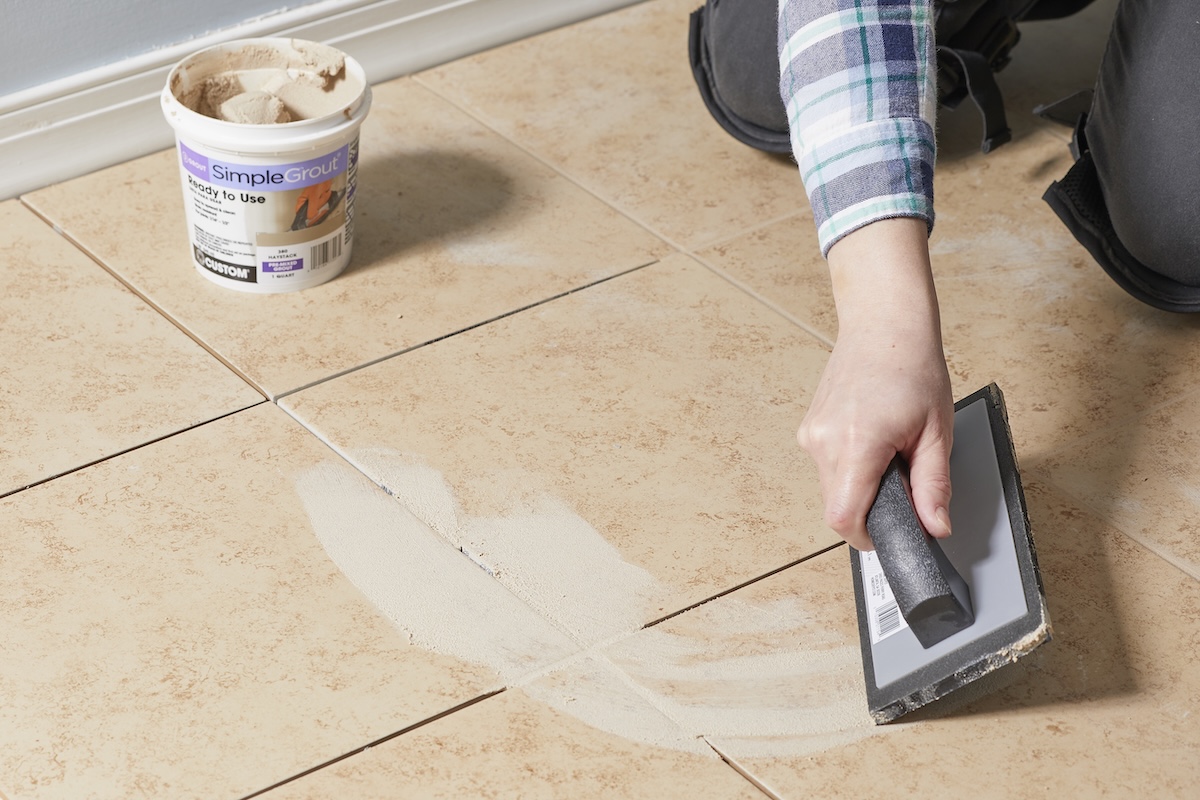
”Start with a small amount of grout in a small area,” cautions Chavoustie. “Don’t let it get away from you!” When you’ve determined the area you’re going to focus on—we recommend a 3-foot by 3-foot section—follow this process:
- For flooring, pour one to two quarts of mixed grout out of your bucket onto the tiles. On vertical surfaces, use a scooping motion in the bucket of mixed grout to load up the grout onto the grout float, a smoothing tool that features a flat and mostly-firm rubber pad.
- Hold a rubber grout float at a 45-degree angle.
- Using the float, spread the grout over the tiles in large arcs.
Step 4: Use a grout float to press the grout into the space between tiles.
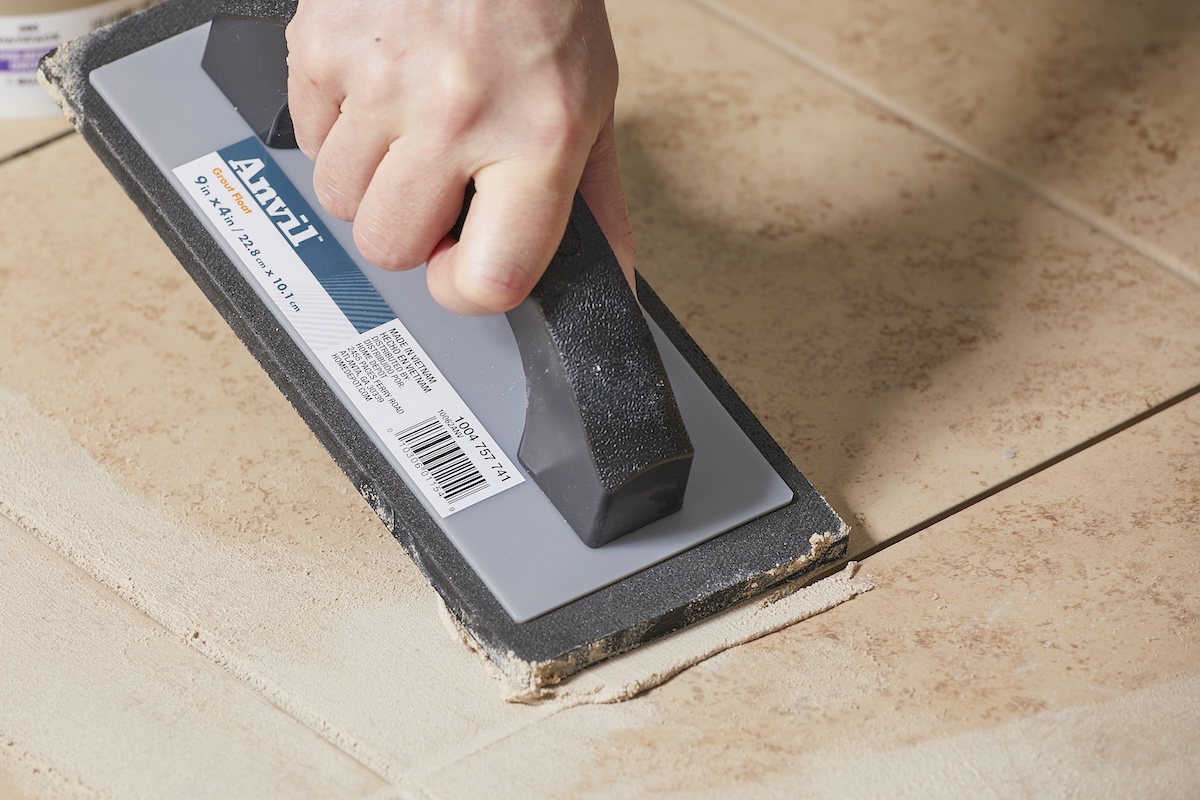
Move the grout float across the spaces between the tile at a diagonal to fill the grout line. If you’re grouting a vertical installation, like a shower wall or a backsplash, apply the grout in an upward motion to avoid spilling.
Do a second swipe over the top to smooth out the grout.
Step 5: Use a sponge to wipe away excess grout.
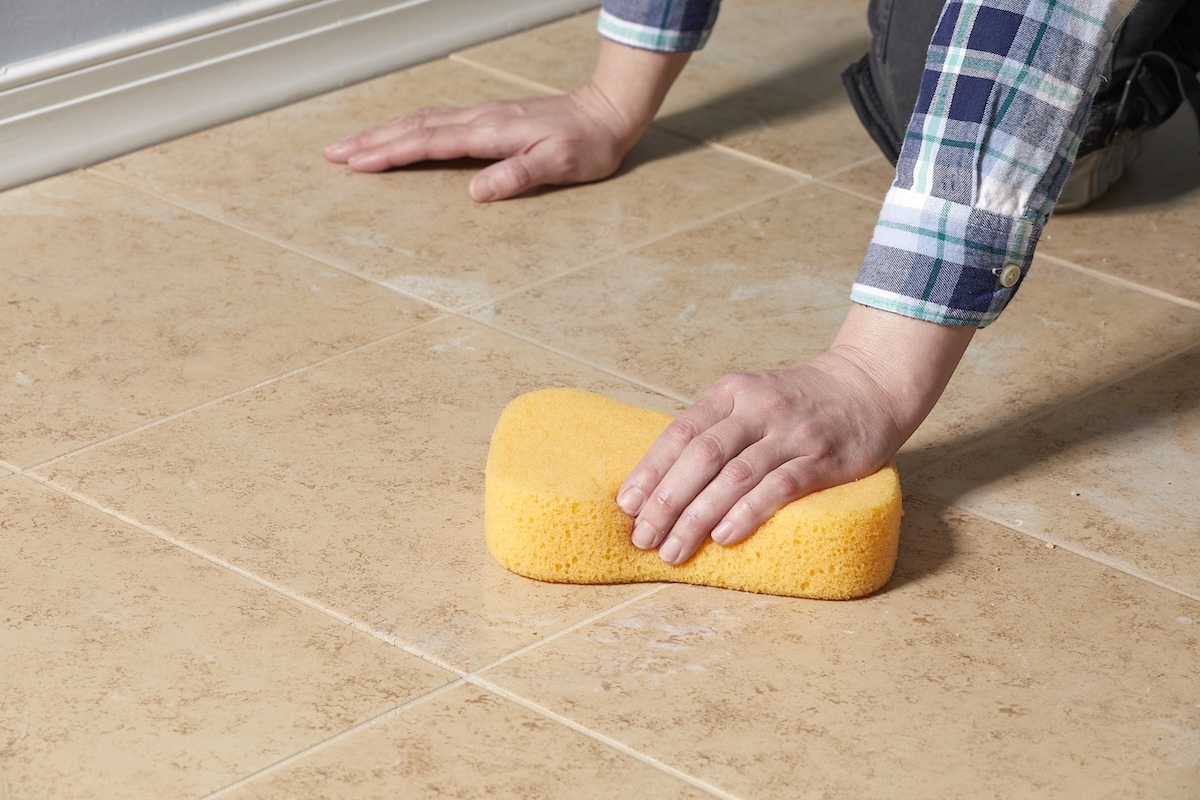
How long should you let grout dry before sponging? Let the grout set for 15 to 30 minutes, and then wipe up the excess with a dense grout sponge soaked in water. (If you think it’s going to take you longer than 30 minutes to grout all of the tiles and be ready to move onto cleanup, you might have to work in smaller sections.)
Wait 3 hours and do it again, this time making sure there isn’t excess grout on the tile or outside of the grout line. Keep your bucket of water close to rinse the sponge, and change the water as often as necessary.
Step 6: Wipe the floor or wall with a dry towel.
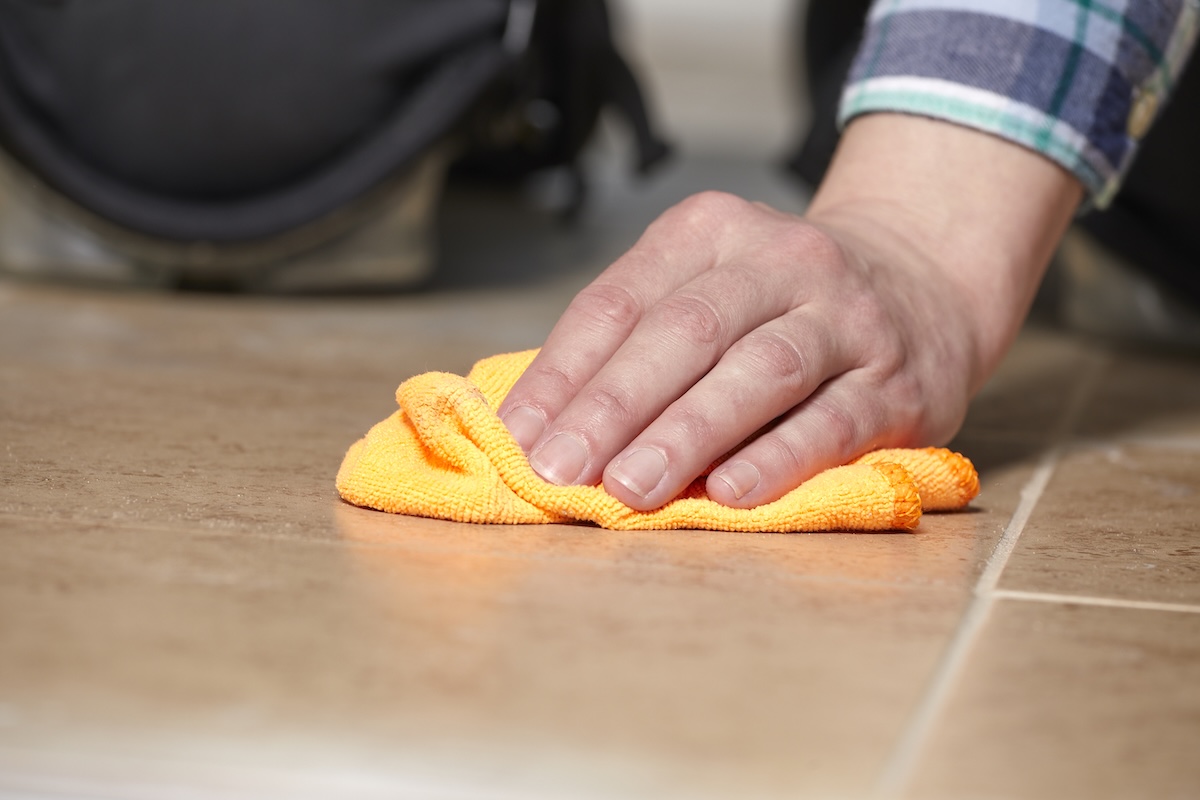
No matter how thorough you are about cleaning up excess grout with a sponge, there will usually be grout haze on the tile once it’s dry. You might be tempted to use a wet cloth to wipe it off, but that will put you in a vicious grout-wiping cycle. A better idea for cleaning tile grout is to use a dry towel to remove grout haze, at which point you can sweep up the dust with a broom or shop vac.
Step 7: Apply grout sealer.
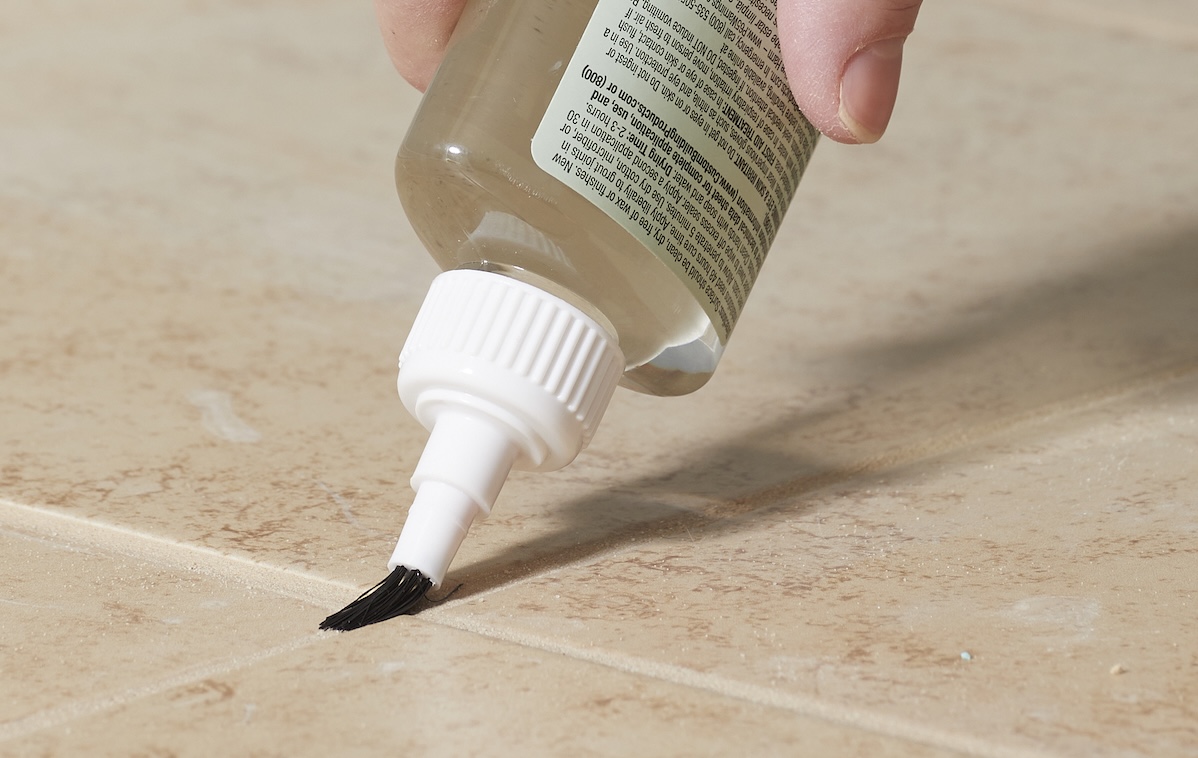
Grout usually takes about 48 hours to fully dry. Once it’s completely cured, you’ll want to seal the tile grout. The best way is to apply a commercial grout sealer, a silicon-based liquid that seeps into the grout, helping to prevent moisture and stains from penetrating. Sealants can be applied just to the grout lines with an applicator, or sprayed over the entire tiled area. The former is more accurate and effective, while the latter is easier.
Step 8: Caulk along walls and corners.
Finish your project by applying caulk, which acts as both a seam sealant and an expansion joint. Run a bead of caulk along the inside corners of your tiling project, and also apply caulk to places where the tile adjoins another surface, such as walls, baseboards, countertops, or bathtub.
FAQs
To remove old grout, you’ll have the best luck using either a grout saw, grout removal attachment for your drill, or another grout removal tool. A utility knife comes in handy, too, to scrape up stubborn bits. Wear a filtration mask and keep a vacuum handy to suck up the debris.
If you didn’t quite get everything cleaned up with a sponge and discover some stray grout bits on the surface of a tile, start by using a plastic scraper to loosen the stuck-on grout. Use short strokes and take care that you’re not damaging the tile. Soak a sponge in warm water and clean the area. If grout remains, scrape again.
You might be able to get away with removing only some of the old grout before applying new grout, but it’s really best to remove old grout entirely before adding more. At a minimum, remove enough of the old grout so that the new grout can adhere to the sides of the tile.
The grouting process for a vertical surface is the same as that for grouting a floor or other horizontal surface. The major difference is that you may choose to use unsanded grout for a backsplash, if you have made the tile spacing very narrow.
